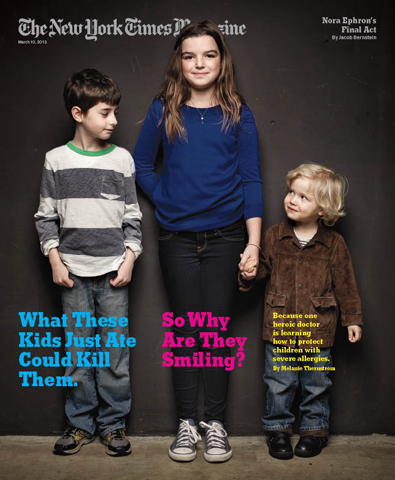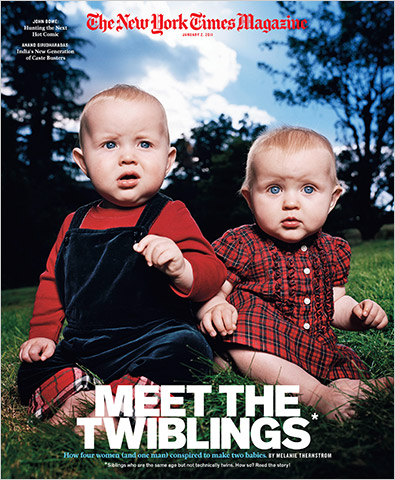
The Wall Street Journal, January 3, 2025
The path by which Luigi Mangione transformed from a 26-year-old Ivy League tech bro to a violent crusader against a capitalist healthcare systems may never be fully understood. But his bleak inner reality seems to have been forged in part by chronic pain.

Tablet Magazine, October 2, 2018
For more than three millennia, the Yazidi people had lived clustered around the sacred Sinjar Mountains in Northern Iraq. It was there, in the small hours of the morning of Aug. 3, 2014, that Maia’s life as she had known it ended.

The New York Times, September 4, 2018
The myth of Steve Jobs: iconoclastic artistic genius, Nietzschean Übermensch, progenitor of the digital revolution who reshaped our domestic lives the same way that the titans of the Industrial Revolution reshaped cities and factories. But “Small Fry,” an entrancing memoir by his first child, Lisa Brennan-Jobs, will force readers to grapple with whether Jobs was not merely unmenschlike but a monster. It is not a stretch to say that if you read this book, you will never think of Jobs the same way again.

The New York Times Magazine, October 22, 2016
A Silicon Valley dad decided to test his theories about parenting by turning his yard into a playground where children can take physical risks without supervision. Not all of his neighbors were thrilled.

The New York Times Magazine, May 12, 2016
When Esther and Dan Levy’s son Andrew was 14 months old, he received a diagnosis of a kind of leukemia so rare that their medical team said getting it was like being bitten by a shark and struck by lightning at the same time.

The New York Times Magazine, March 10, 2013
As Nadeau lectured, Kim became filled with conviction:
This is the person who will cure my daughter.
Afterward she approached Nadeau and asked what she could do for her 6-year-old, who
was fatally allergic to most major food groups.
"I am not sure," Nadeau told her, "but I promise, we will figure it out."
Interviews
NBC's
The Today Show
filmed a segment about the allergy treatment research, broadcast on Thursday, March 14th, 2013.
video 1 >
video 2 >
video 3 >
ABC's
Katie
talk show with Katie Couric had a segment on the allergy research with Dr. Nadeau and Melanie
on Thursday, March 14th, 2013.
information and video >

The New York Times Magazine, January 2, 2011
There was even something I liked about the idea of a family created by many hands,
like one of those community quilt projects,
pietra dura,
or a mosaic whose beauty arises from broken shards. If it takes a village to raise
a child, why not begin with conception?
Interviews
Melanie, Melissa and Fie appeared on NBC's
The Today Show
on Tuesday, January 4.
video >
NPR's
Talk of the Nation
featured Melanie and Fie discussing third-party reproduction
on Wednesday, January 5.
audio recording and transcript >

It was the eve of our first wedding anniversary, and I was still trying to understand my husband's financial philosophy and the extent to which it was a philosophy. I was hoping it was more a matter of habit because one thing was plain: it was different from mine. Michael was frugal.

The New York Times Magazine, December 28, 2008
Death is the ultimate subject for a poet. It's the ultimate subject for all of us, of course—the self impossibly contemplating its impossible absence—but for a poet whose work is to express the inexpressible, it is a particular opportunity.

The New York Times Magazine, May 14, 2006
Who hasn't wished she could watch her brain at work and make changes to it, the way a painter steps back from a painting, studies it and decides to make the sky a different hue?

The New York Times Magazine, February 13, 2005
Janis Spindel is on her way from her office on the Upper East Side of Manhattan to a nearby cafe to meet a gorgeous guy. ''Gorgeous,'' she tells me. ''Unreal. He's just my type -- 36, Jewish, Ivy League, successful. And gorgeous. Just gorgeous.''

The New York Times Magazine, May 8, 2005
The rebels have ruined northern Uganda. No one wanted to look out the car window on the three-hour journey northwest from Lira to Gulu near the Sudanese border.

The New York Times Magazine, April 18, 2004
Chapter 1: A Healing Encounter, or How Medicine Lost Its Way and Tried to Restore a Sense of Story. There is nothing unusual about the case with which Rita Charon, a plenary speaker at a medical conference in Gainesville, Fla., began her lecture.

The New York Times, November 7, 2004
In Mike Nichols's forthcoming movie, "Closer," Jude Law, playing a journalist, recounts to Natalie Portman how he first fell for her.

Food & Wine, December 2004
Melanie Thernstrom tells how she was tempted to pilfer the best toffee recipe in the universe but found redemption in a different kind of sweet.

The New York Times Magazine, August 24, 2003
In most public accounts of divorce, there is no confusion as to why the couple is splitting up. The reasons are so sound -- the trails of manipulation, exploitation and betrayal so thick -- the only mystery is why the couple were together in the first place.

The New York Times Magazine, June 9, 2002
It was at my grandmother's memorial service that a friend of hers mentioned that my sculpture -- the one my grandmother had always promised to leave me -- was worth $4 million.

The New York Times Magazine, December 16, 2001
A modern chronicler of hell might look to the lives of chronic-pain patients for inspiration. Theirs is a special suffering, a separate chamber, the dimensions of which materialize at the New England Medical Center pain clinic in downtown Boston.

Food & Wine, June 2001
She wanted to make the cake for her best friend's wedding. And nothing (not even a plea from the bride) was going to stop her.

The New York Times Magazine, December 3, 2000
Twenty years ago, Benjamin Holmes disappeared. Twelve years ago, his wife had him declared dead. Two months ago, he returned with a bang.

The New York Times Magazine, October 19, 1997
When Kyra Voss, a teacher at the Riverside Language School, walks into English-only class every day, she encounters a pained silence.

New York, July 15, 2002
Like many people, A.J. Pierce knows exactly what she earns, but has no idea what she spends—and she doesn't wish to know.

Vanity Fair, March 1999
Tied to a wooden fence, tortured, and left to die, 21-year-old Matthew Shepard—a bright, sensitive freshman at the University of Wyoming—has become a national symbol of violance against gays.

George Magazine, September 1999
Even from this distance—six years later, in the emerald-white light of a patio overlooking Waikiki Beach—Ramdas Lamb insists he has no real understanding of the events that transformed his life.

The New Yorker, October 18 & 25, 1999
They don't exactly look like a coven—Amelia Atwater-Rhodes and her three friends locking arms as they walk, their voice overlapping and merging into giggles.

New York, July 13, 1998
Two New Jersey High School sweethearts have a baby in secret and leave it in a Delaware dumpster.

The New Yorker, June 3, 1996
A year after a young woman at Harvard killed her roommate and then took her own life, questions about why it happened, and whether it had to.



























